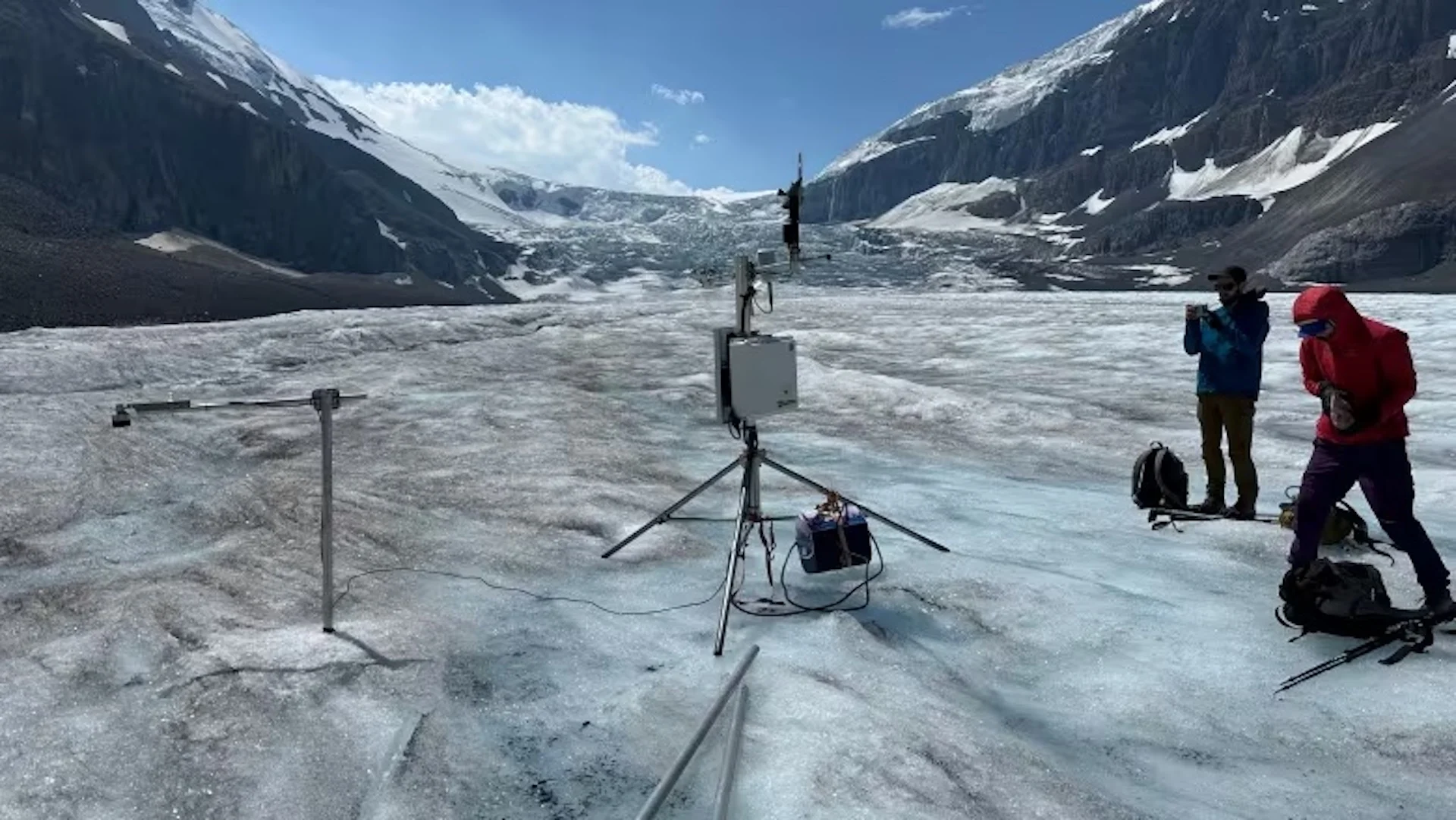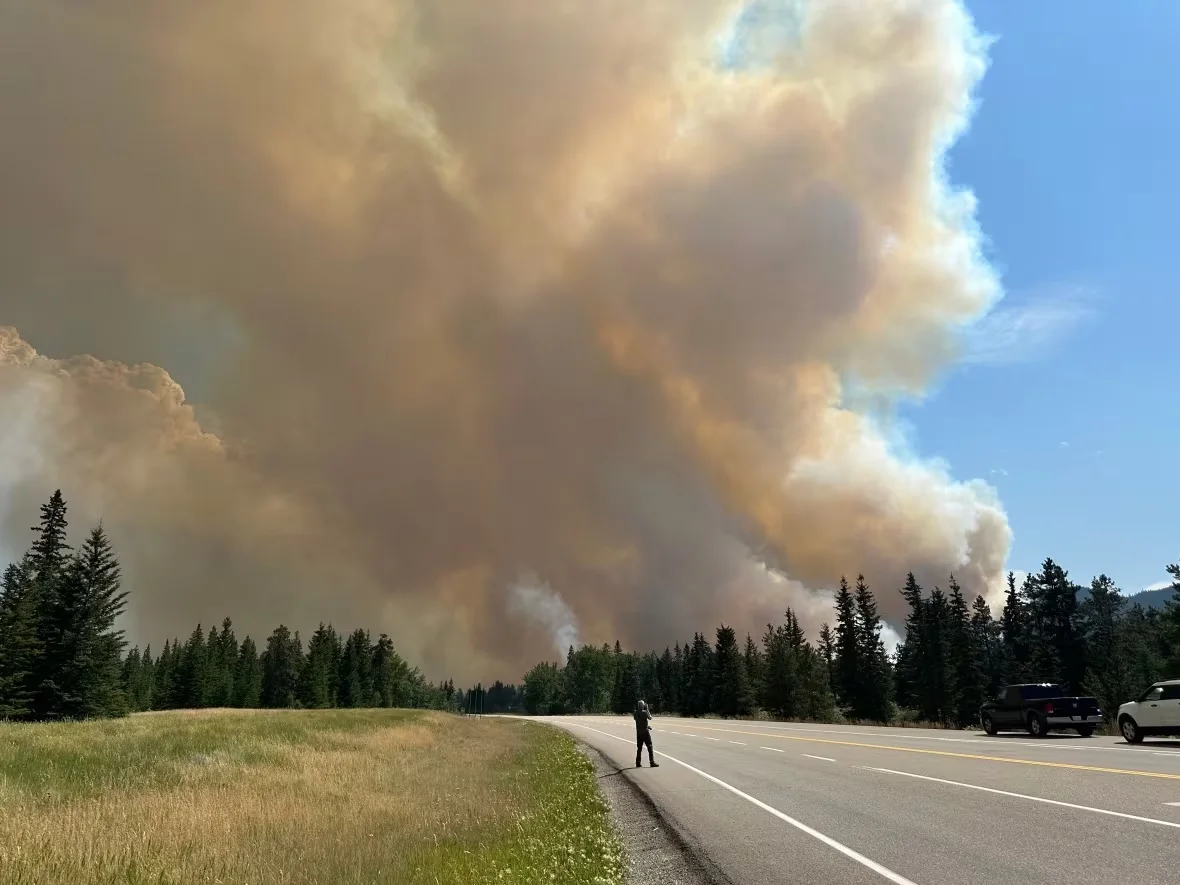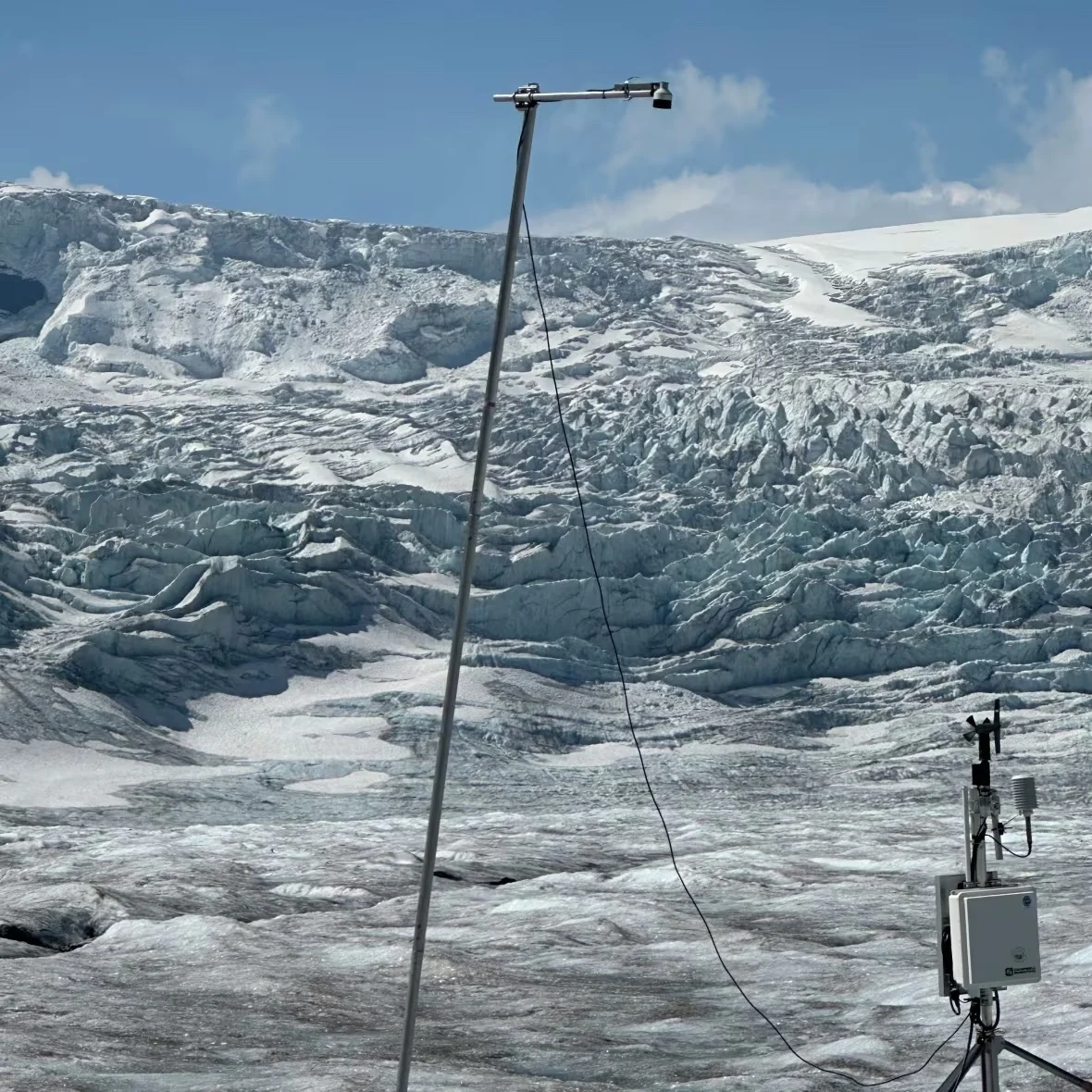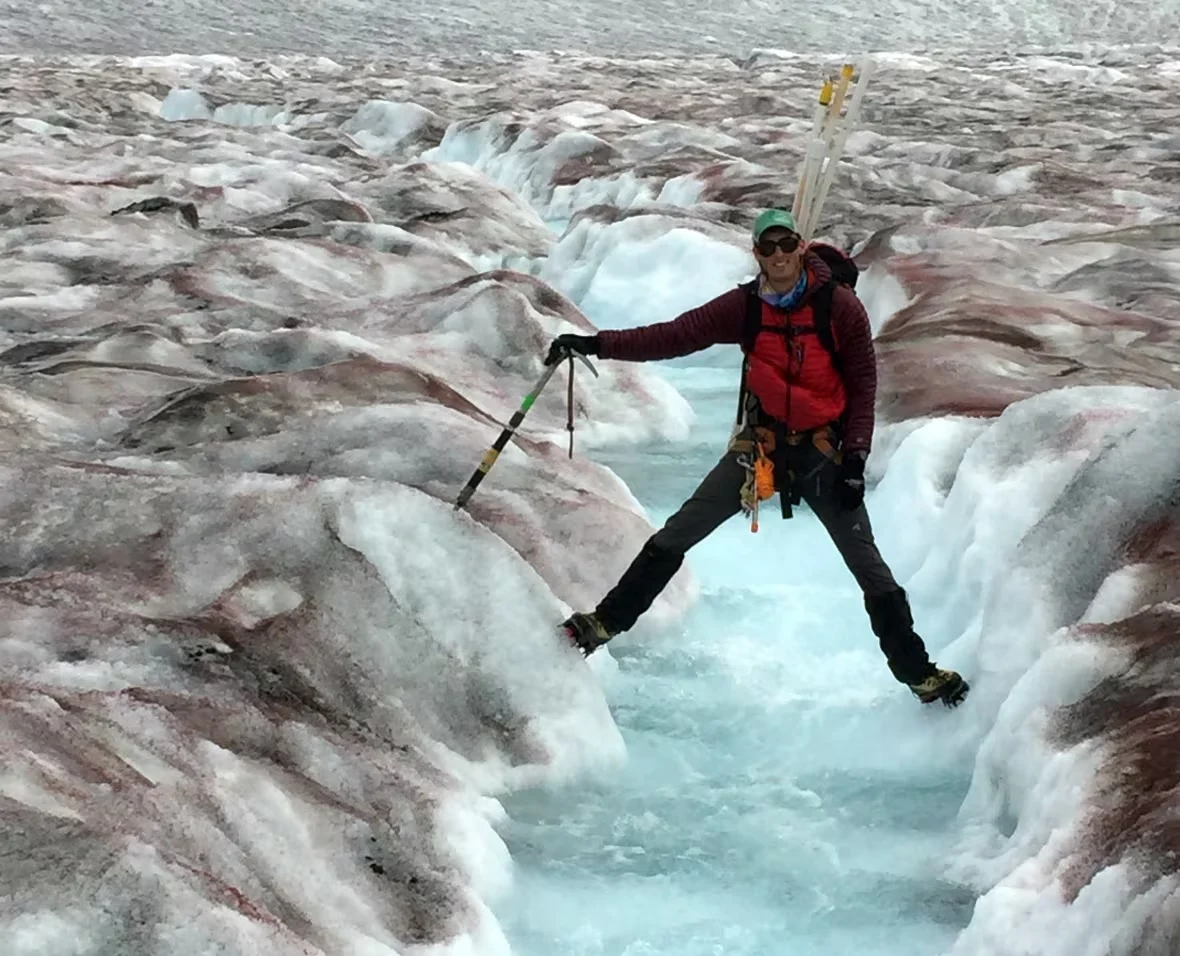
Soot and ash from Jasper wildfires put Alberta's glaciers at risk: Scientists
As the devastating fires around Jasper National Park filled the sky with smoke and ash, John Pomeroy was thinking of the region's famous — and melting — glaciers.
Just a week before the fires, the University of Saskatchewan hydrologist had been to the Athabasca Glacier located about 100 kilometres south of the town of Jasper, to collect measurements. His team found that the glacier had already melted about three metres in thickness since last September. "Which is plenty for a mostly winter period," he said.
SEE ALSO: Startling video shows first moments of the south Jasper wildfire
What Pomeroy's been seeing at the glacier is not the bright white, snowy landscape they're often associated with — but rather a grimy and darkened surface. He believes it's likely that the glacier has been further darkened by the ash and soot from the latest fires.
And the grime doesn't just look bad. According to Pomeroy, the glacier is melting faster because darker surfaces absorb more solar radiation than a clear, white surface would.
"And the combination of that, along with the hot temperatures, puts a glacier into a death spiral."

(Jasper National Park/Facebook via CBC)
According to measurements collected by Pomeroy's team, the Athabasca Glacier melted nearly nine metres last year, a record for the glacier that has been visited by millions of people and is an iconic stop on Alberta's scenic Icefields Parkway.
Pomeroy is worried that, in addition to the summer's soaring temperatures, all the extra soot from the recent wildfires could result in that record melt being surpassed.
"It puts these glaciers in a very perilous position yet again," he said.
Meltwater from the thinning glacier feeds the Athabasca River, which runs more than 1,000 kilometres through Alberta and Saskatchewan. The Sunwapta River, a tributary of the Athabasca River that runs just below the glacier, has seen abnormally high flows since early July, which Pomeroy says indicates a faster than normal melt.
CANADA'S WILDFIRES: Visit The Weather Network's wildfire hub to keep up with the latest on the active start to wildfire season across Canada.
Researchers say melting glaciers in Western Canada could disrupt the flow of glacier-fed rivers, impacting water supply and hydroelectric power generation in the region.
How wildfires speed up glacier melt
Pomeroy has been studying Alberta's glaciers for decades, and has calculated just how much wildfire smoke and ash is affecting their melt.
His team examined the Athabasca glacier from 2015 to 2020, which included particularly severe wildfire seasons in 2017 and 2018.

A person takes a photo of billowing smoke from a wildfire in Jasper National Park. Ash and soot from the fires are being deposited on Alberta's glaciers, darkening their surfaces and speeding up the rate of melt. (Craig Ryan/CBC)
In a study published in 2022, Pomeroy and his team found that soot and ash from wildfires darkened the surface of the glacier, causing the ice melt to increase by up to 10 per cent.
The study also suggested the surface stayed dark beyond the fire season because algae had formed on the surface, feeding on the soot and thriving in warmer conditions — another consequence of climate change.
"So we now have algae blooms not just on Lake Erie, not just on Prairie lakes," Pomeroy said. "We have algae blooms on our glaciers in the Rockies."
In years where there was a lot of smoke in the sky, the study found that it prevented some solar energy from reaching the glacier, compensating for some of that increased ice melt. But the cooling impact of the smoke was limited, and the net effect of wildfires in increasing glacier melt was "substantial and long lasting," according to the study.

Researchers have noted that the surface of the Athabasca Glacier, seen here on July 16, has become significantly darker. Several bad fire years in a row mean there's been no respite for the glaciers. (Submitted by John Pomeroy)
And while the researchers noted heavy rain can wash away the grime, climate change is expected to make extreme fires more frequent, which means there will be fewer years where smoke and soot don't impact the glaciers.
"What we find is that we're getting big fire years so often … that the soot is getting refreshed almost every year," Pomeroy said.
"It's hard to find years now where there's a fairly clean glacier surface to record anymore."
Rapid melt endangers water, electricity supply
Ben Pelto is a glacier scientist based in North Vancouver. His work as a consultant includes advising utilities and governments about how rapid glacier melt could endanger water resources and hydroelectric power generation.
"Yes, the glaciers are melting faster than ever, but they're also smaller than they used to be," he said.

Glacier scientist Ben Pelto says a hotter climate means there's less snow on the surface of glaciers, which means they don't reflect as much heat, resulting in faster melting. (Margot Vore)
"So even though they're melting faster, it's a smaller area that's generating that melt," which eventually leads to reduced flow to rivers that provide water to communities or power hydroelectric power stations.
A 2020 study by University of British Columbia researchers looked at which areas of Alberta would be most at risk from melting glaciers.
One of those locations was the Bighorn Dam, Alberta's highest-performing hydroelectric facility and largest reservoir, which is at risk of summer water shortages because of future glacier loss.
Pelto has studied glaciers in B.C. and Alberta and has observed them darkening as well, but he pointed out that along with wildfires, the glaciers also accumulate dust and dirt from other sources, including nearby fuel emissions.
He says what concerns him is that a hotter climate means both that there's a smaller amount of snow, and that the snow covering the glaciers is melting, leaving the icy surface exposed. Fresh, white snow reflects much more heat than just clear ice.
"So as we lose snow quicker during the year, the amount of melt that can go on is so much more because it's reflecting less," he said.
WATCH: Firefighter dies while battling Jasper wildfires
*Thumbnail courtesy of John Pomeroy via CBC.
The story was originally written by Inayat Singh and published for CBC News.










